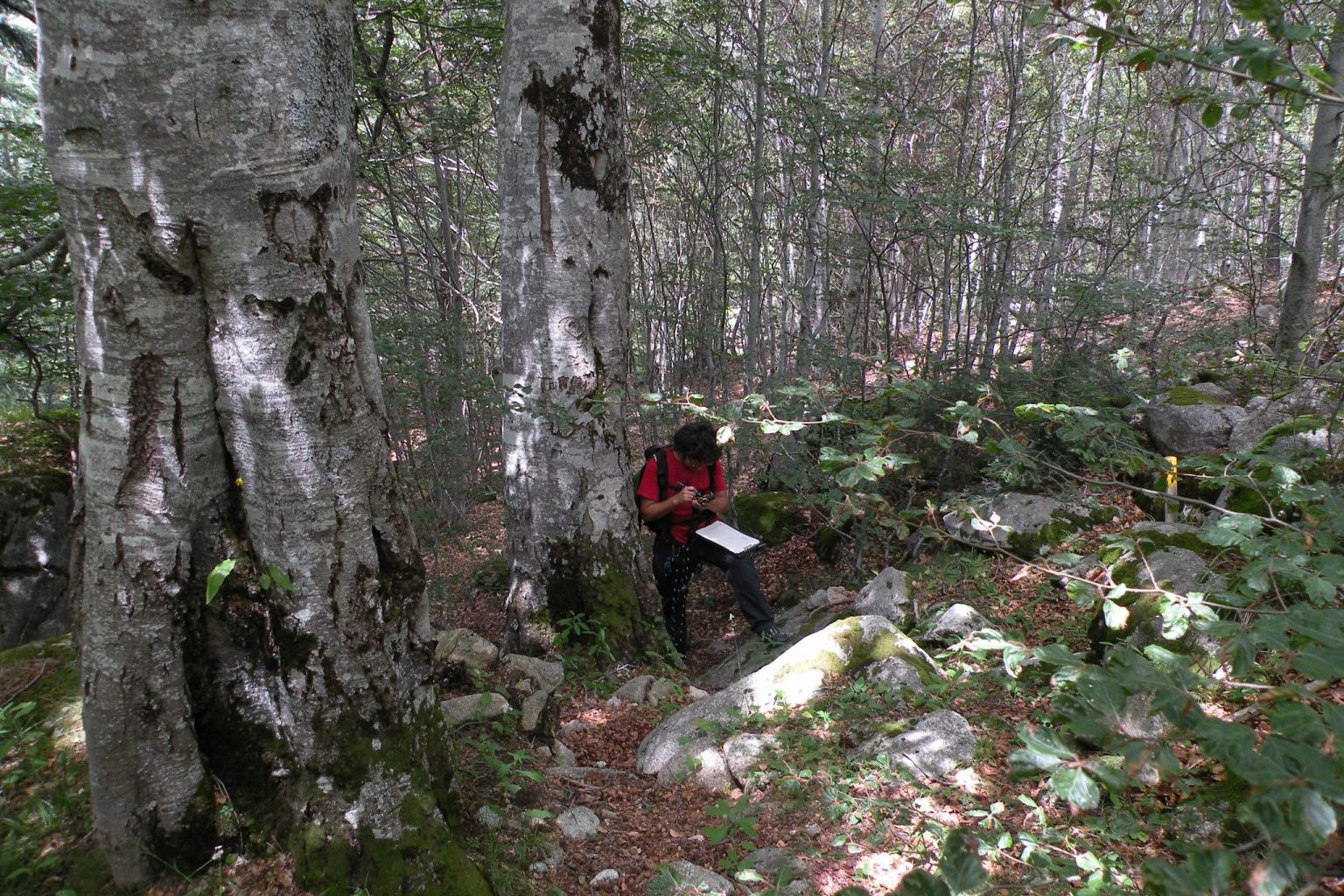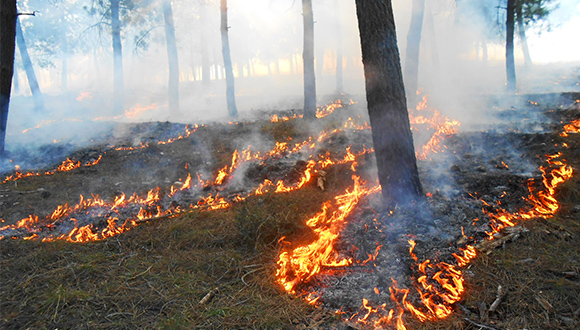What is forest resilience?
Due to climate change, every year we record higher temperatures and precipitation is becoming scarce. This change in climate paradigm, added to a cluster of disturbances such as forest fires and pests, tests the resilience of forests around the world and especially those in Mediterranean climate zones that have suffered an increase in the conditions of aridity The ability of species to adapt to these conditions will define the forests of the future. But are Mediterranean forests resilient enough?
What is forest resilience?
The concept of resilience was coined in the middle of the last century and, over the years, it has been adopted in various fields, such as ecology, psychology and other social technological sciences, which has made it popular.
In ecology we often use the term resilience to describe the ability of an ecological system to recover its properties after being altered by a disturbance or intense and continuous stress. This definition may seem very simple, but it hides many concepts. Let's explain them in parts:
First of all, we must know that ecosystems are complex systems, since there are infinite interactions between the elements that make them up: from water, through fungi and the smallest insects, to the largest trees. All elements play an important role and participate in the multiple properties and functions of each ecosystem, such as water retention, carbon storage or material reuse. This is why we say that ecosystems, and in this case forests, are multifunctional systems.
On the other hand, a disturbance is a modification of the environment that causes the loss of living matter in an ecosystem. In other words, it destroys a large part of the organisms that live there. There are many types of disturbances, both natural and caused by humans, but the ones that mainly affect European forests are insect pests, falling trees due to wind and forest fires. The latter is the most common in Mediterranean forests. However, not all disturbances are ecological disasters or harmful to all species. The pines of the Mediterranean forests, for example, have adapted to live with fire and use it to disperse their seeds. On the other hand, the fall of trees due to winds creates open spaces in the forests that allow light to enter the undergrowth and this favors some species. Thus, disturbances do not affect all components of an ecosystem in the same way.

Although the continued rise in temperatures associated with climate change does not constitute a disturbance as such, in conjunction with the scarcity of rainfall, it stresses species, making them much more susceptible to collapse after a disturbance However, species also show a certain resilience by adjusting their physiology, their life cycle, or modifying their behavior. For example, there are birds that are stopping migrating to the African continent because they already find resources throughout the year in Europe, or there are plant species that are weeks, even months ahead of flowering.
Finally, climate change is associated with an increase in the frequency and intensity of some types of disturbances, so that we have to broaden the field of vision, and not only take into account disturbances in isolation (such as a fire ), but also incorporate all of its characteristics of frequency, intensity and extent, what we call the regime of disturbances.
How do we assess the resilience of a forest?
In order to assess the resilience of an ecosystem, it is necessary to define a previous state with which to compare before and after the disturbance. Since it is impossible to know all the properties of an ecosystem (species richness, plant structure, water retention, etc.), only the most relevant or representative ones are considered, what we call indicators. For example, it is difficult to know the total number of species, -in fact we still do not know all the biodiversity of Catalonia!-, and that is why we use groups that we call bioindicators. Based on the presence and abundance of these species, we can assess the health of an ecosystem. On the other hand, the quality or health of the soil (amount of organic matter, degree of compaction, moisture) gives us a lot of information about the health of the ecosystem above it.

Disturbances are often unexpected and this makes it difficult to assess recovery to an unknown state if no data were available prior to the disturbance. This is why it is of the utmost importance to continuously study the Mediterranean ecosystems and around the world, especially those most threatened. The greater knowledge of our environment allows us to manage it more appropriately and with a vision for the future.
How can the resilience of a forest be improved?
Throughout history, Mediterranean forests have had to adapt to the varying conditions of the Mediterranean climate. Their seasonal variability (rainy springs and autumns and hot and dry summers) means suffering water stress in the summer (among other consequences) and has led them to be particularly resilient forests. Conversely, climate change is rapidly altering these conditions and putting forests on a tightrope. However, we can contribute to fostering the resilience of forests to improve their resilience.
One of the actions that is in our hands is to enhance its biodiversity. The more diversity of fauna and flora, landscapes and forest types there is, the more likely it is that forests will survive the changing conditions we have and that await us.
The results of the BIORGEST European project, coordinated by the Consorci Forestal de Catalunya, of which he has been one of the main partners, indicate that correct forest management can enhance the biodiversity of Mediterranean forest ecosystems and their resilience efficiently and in a relatively short period of time.
Correct forest management enhances the biodiversity of forest ecosystems and their resilience efficiently and in a relatively short period of time.
In addition, they provide an important indicator to be able to evaluate the capacity of a forest to host biodiversity: the Potential Biodiversity Index (IBP). The presence of native species adapted to local conditions, different layers of vegetation, dead wood, trees with large diameters, as well as open spaces, small hiding places or the presence of water that can be used by wildlife are some of the properties that the IBP evaluates and that characterize the biodiversity of forest ecosystems.
Another aspect on which we can influence is forest management oriented to the lack of water. Lack of water is an obvious stress on Mediterranean forests, but we cannot irrigate them in a generalized way. However, in order to reduce competition for a resource as limited as water, we can make use of adaptive forest management combined with extensive livestock farming. The results of the MIDMACC European project, with the participation of the , demonstrate that selective thinning and clearing of scrub reduces forest density, promoting more mature and healthy forests, reducing the risk of fire and favoring rural development thanks to silvopasture..

Finally, we can also make a forest more resilient to fires. Although our forests are prone to it, a change in the regime and intensity of fires can lead to large forest fires with undesirable consequences. This management includes controlled undergrowth or low-intensity burning, practices that can considerably reduce the risk of fire. In the case of already burned areas, human action can also help recover the burned environment a few months after the fire, by taking actions to prevent soil erosion or in those cases where the vegetation is not able to reestablish themselves, favoring the arrival of seeds and the establishment of new individuals.
Concern for the continuity of forests is spreading throughout the planet. This has promoted that research centers from all over Europe, with the Universidad de Vigo being the representatives in the Iberian Peninsula, have coordinated in the international project RESONATE to find common points that help the resilience of forests, generating new knowledge and transmitting it to owners and administrations everywhere in the face of the challenges brought about by climate change.







